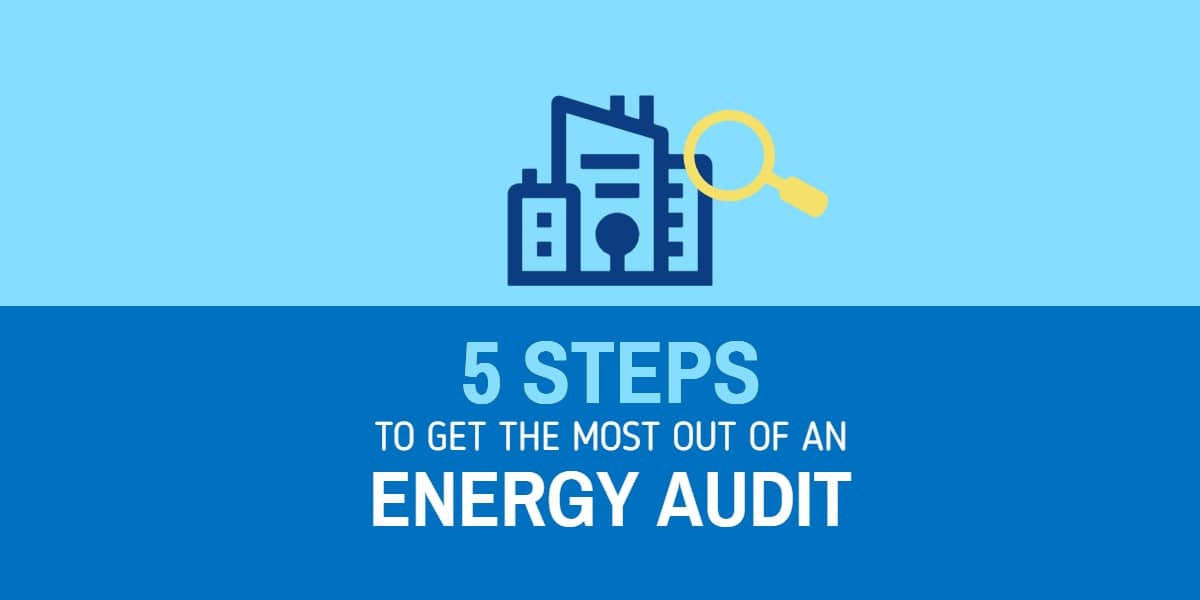
 Posted by Pam Hoddinott
Posted by Pam Hoddinott Utility costs have been spiraling upward with no relief in sight. Because of this, companies continue to search for ways to keep operating expenses to a minimum. They also are responding to sustainability pressures and looking for ways to link sustainability with corporate strategy. An energy audit is a great way to identify opportunities that will reduce energy use, lower operating costs, and improve sustainability.
An energy audit is not the first step or a final action toward energy efficiency, but one of several steps along the way toward a more optimized building. As we discussed in What is the Difference Between ASHRAE Level 1, 2, and 3 Audits? Part 1 of our energy audit blog post series, an energy audit is an important foundation for optimizing a building’s energy and financial performance. An energy or building audit gives you a gauge of how your facility and its assets are performing and where improvements can be made to make it more efficient moving forward.
Below we walk through 5 steps that are key to a sound energy management plan with the energy audit process squarely in the center. An experienced energy professional will work closely with building owners, operations and engineering staff, and other appropriate individuals through this process to ensure accuracy of the data and that the recommended energy conservation measures are applicable to the company.
1. Benchmark
Benchmarking is the first step to true energy efficiency. It compares the energy performance of a building with other similar buildings. This comparison categorizes how buildings in a portfolio are operating – from best performing facilities to worst performing facilities. It then provides a clear understanding of which buildings to concentrate on first.
If you only have one building, the benchmark comparison tells you how your building is performing relative to other similar buildings. This can define the level of urgency if further engineering analysis is needed to produce significant energy savings.
Energy benchmarking is becoming a popular approach as a way to start the transformation to an energy management program and more energy efficient facilities.
2. Plan
The benchmark results are useless without a plan. Now is the time to review existing energy efficiency and sustainability corporate goals or set new goals. The information from the benchmark provides a comparison. Work with the energy professional to create a plan that prioritizes which facilities can make the biggest impact and audit those first.
Don’t forget to consider important metrics when creating the plan. Do all projects need to meet a 3-year payback? Do you have a budget for a major cap ex upgrade? Will you need to adhere to a timeline due to a looming deadline or incentives or rebates that may be expiring soon?
3. Audit
Now that you’ve determined which buildings need the most attention, it is time to do an energy audit. If you aren’t sure which type of audit best fits your needs, review “What is the Difference Between ASHRAE Level 1, 2, and 3 audits?”. The audit will provide specific recommendations on how to lower energy usage.
Discuss the various energy conservation measures and savings estimates included in the energy audit report with your staff and the energy professional that conducted the audit.
4. Implement
Remember, the energy audit itself doesn’t improve a building’s efficiency. Energy conservation measures must be implemented in order to see results.
The energy audit report contains various low-cost and no-cost projects usually with a good Return on Investment (ROI) and short simple payback. Cost savings should be realized soon after the implementation of these projects. Use the plan put in place earlier to determine which larger, more capital-intensive projects make the most sense to implement. Often, to maximize ROI, companies will combine low/no-cost projects with higher cost ones.
When selecting a company to perform the energy audit, it is important to consider two questions: 1) do they have substantial expertise and perspective on the buildings’ conditions, and 2) can they also seamlessly design and build the projects recommended? Managing multiple contractors to install various energy efficiency projects can be daunting (more about that later).
5. Measure
Results should be measured after energy conservation measures are completed, and the facility should be reassessed to verify the expected energy savings. The measured results should determine if the goal of the project was achieved and whether the building’s energy efficiency improved from its original benchmark.
It is worth considering installing monitoring equipment to continuously measure energy usage. The best energy management results often begin with these five steps followed by continuous monitoring of the building’s energy consumption and its operational parameters where problems and issues can be noted and remedied in real time.
Before you begin these 5 Steps to get the most out of an energy audit which will lead to greater energy efficiency, it is important to find a single point-of-contact that can provide a full suite of services – consulting, implementation, and managed services. The best results will be garnered when you have an energy management organization that can perform benchmarks, provide consulting on goals and plans, perform a building energy audit, design and implement energy conservation measures, and provide ongoing monitoring and management services.
The Chateau Energy Solutions’ team has decades of experience helping clients across the nation become more energy efficient. Our experts have completed hundreds of energy audits. They get to know your facilities from the inside out and can put you on the path to significant energy savings. If you are ready to get started or have questions,to know more? Contact Chateau Energy Solutions or go here to see what we’ve done for our clients.
Review Part 1 “What is the Difference Between ASHRAE Level 1, 2, and 3 audits?”
Click on the infographic below for more details.

5 Steps to get the most out of an Energy Audit
Chateau Energy Solutions Making Energy an Asset®
Ready to get started on the path to energy efficiency and sustainability?